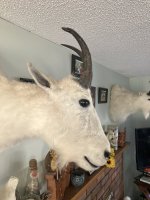Hi Guys,
I'm working on a project to improve Mountain Goat Identification, designed for both educational and practical purposes.
Check it out and test your knowledge!
The model is built to predict the ### of mountain goats based on specific features, like horn shape and base thickness. Currently, it's a work in progress and has been trained on a small dataset. With your help, it can get even better!
By uploading images, you’re contributing directly to the improvement of the model, helping to create a more accurate and useful tool. Keep in mind, this version isn’t perfect—it will give a prediction for any image you upload, whether it’s a mountain goat or not.
Try it out at: https://www.daleandcompany.com/pages...oat-identifier
I'm working on a project to improve Mountain Goat Identification, designed for both educational and practical purposes.
Check it out and test your knowledge!
The model is built to predict the ### of mountain goats based on specific features, like horn shape and base thickness. Currently, it's a work in progress and has been trained on a small dataset. With your help, it can get even better!
By uploading images, you’re contributing directly to the improvement of the model, helping to create a more accurate and useful tool. Keep in mind, this version isn’t perfect—it will give a prediction for any image you upload, whether it’s a mountain goat or not.
Try it out at: https://www.daleandcompany.com/pages...oat-identifier







































































